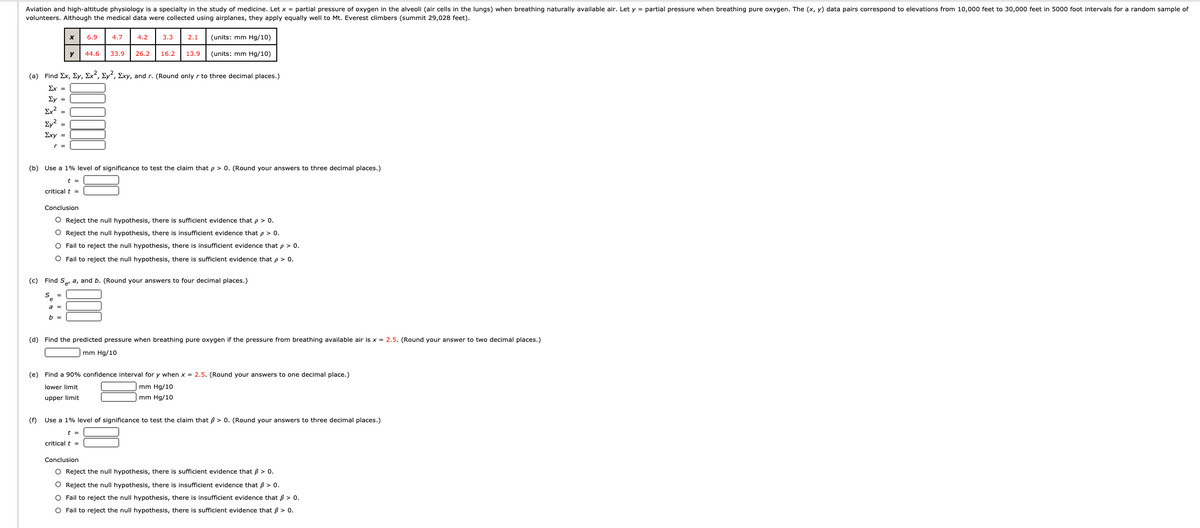Aviation and high-altitude physiology is a specialty in the study of medicine. Let x- partial pressure of oxygen in the alveoli (air cells in the lungs) when breathing naturally available air. Let y- partial pressure when breathing pure oxygen. The (x, y) data pairs correspond to elevations from 10,000 feet to 30,0o0 feet in 5000 foot intervals for a random sample of volunteers. Although the medical data were collected using airplanes, they apply equally well to Mt. Everest climbers (summit 29,028 feet). x 6.9 4.7 4.2 3.3 2.1 (units: mm Hg/10) y 44.6 33.9 26.2 13.9 (units: mm Hg/10) 16.2 (a) Find Xx. Ev. , E, Ey, and r. (Round only to three decimal places.) Exy (b) Use a 1% level of significance to test the claim that p> 0. (Round your answers to three decimal places.) - criticale Conclusion O Reject the nul hypothesis, there is sufficient evidence that p>0 O Reject the null hypothesis, there is insufficient evidence that e>0. O Fail to reject the null hypothesis, there is insufficient evidence that > 0. O Fall to reject the null hypothesis, there is sufficient evidence that e> 0. (c) Find Sa, and b. (Round your answers to four decimal places.)
Continuous Probability Distributions
Probability distributions are of two types, which are continuous probability distributions and discrete probability distributions. A continuous probability distribution contains an infinite number of values. For example, if time is infinite: you could count from 0 to a trillion seconds, billion seconds, so on indefinitely. A discrete probability distribution consists of only a countable set of possible values.
Normal Distribution
Suppose we had to design a bathroom weighing scale, how would we decide what should be the range of the weighing machine? Would we take the highest recorded human weight in history and use that as the upper limit for our weighing scale? This may not be a great idea as the sensitivity of the scale would get reduced if the range is too large. At the same time, if we keep the upper limit too low, it may not be usable for a large percentage of the population!

Step by step
Solved in 5 steps




